[javascript protected email address]
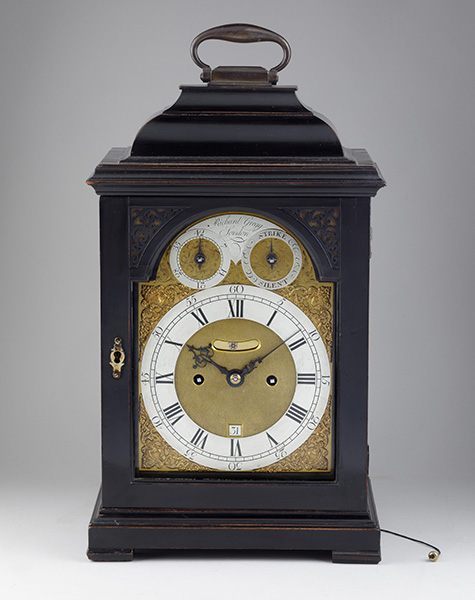
Richard Gregg, London

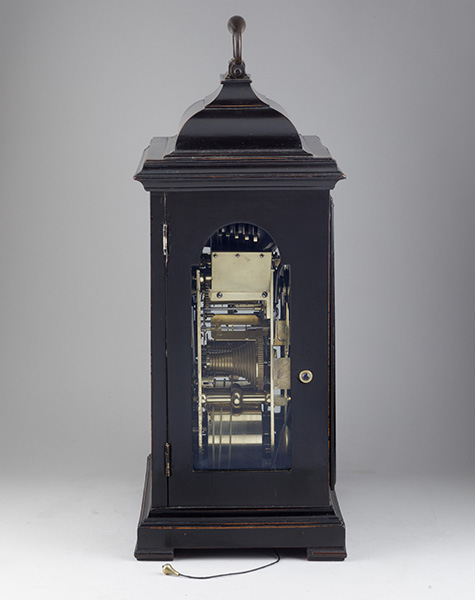
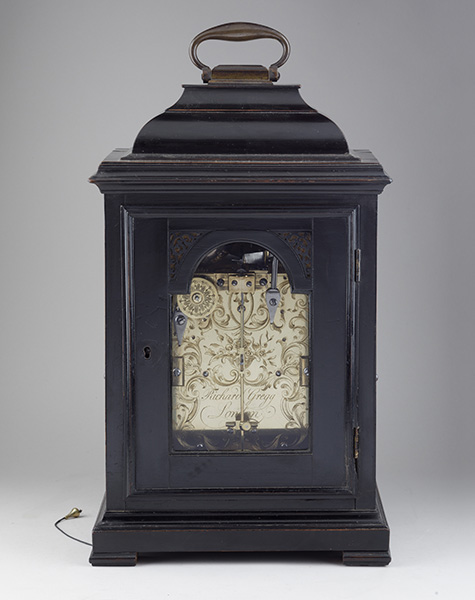
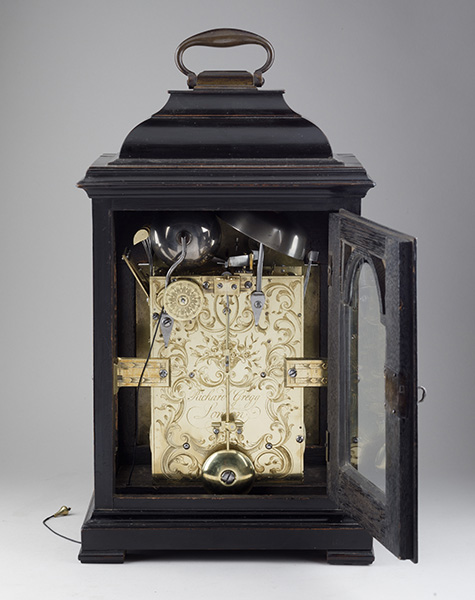
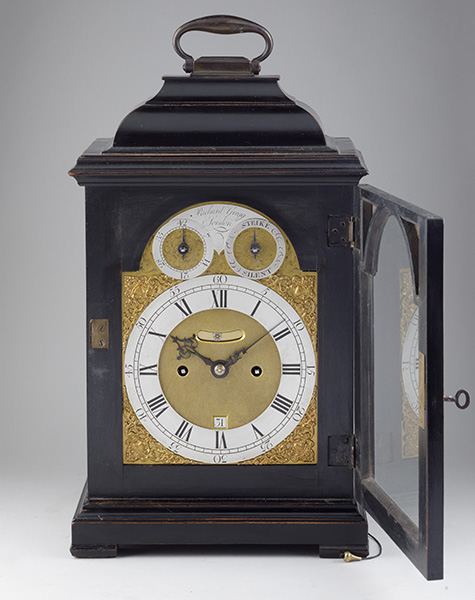
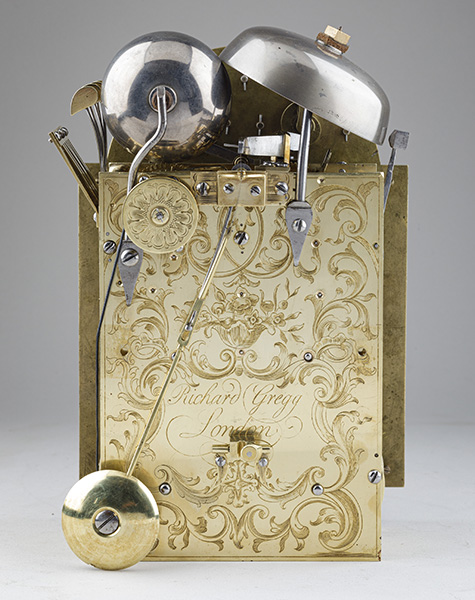

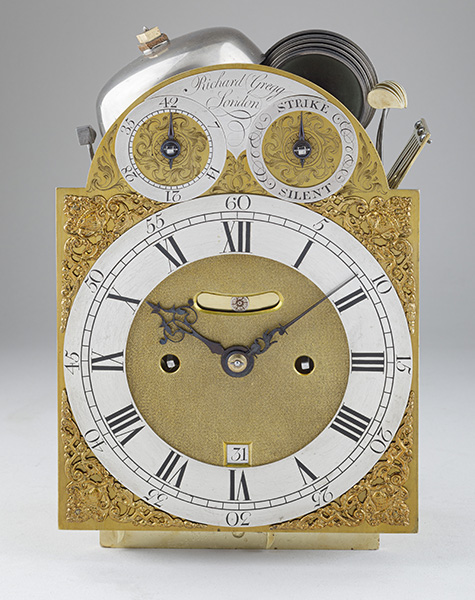
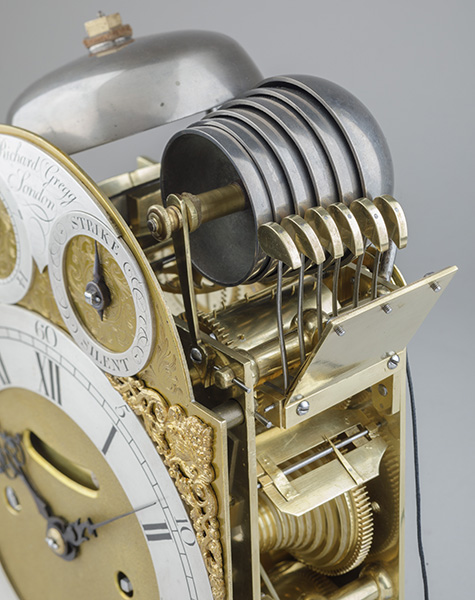
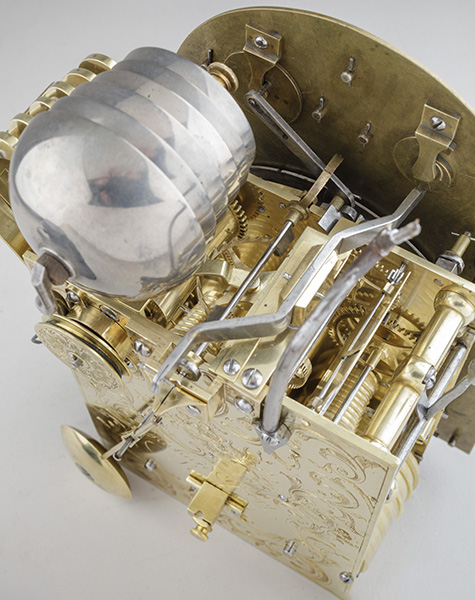
Circa 1745
£12,500
14-¾ inches high
A good ebonised striking table clock with pull quarter repeat and pendulum regulation. Case The case has a brass handle and inverted bell top with glazed sides, fine quality mouldings and the base resting on block feet. Dial The 6-inch brass dial is signed Richard Gregg London on a silvered plaque in the arch flanked by subsidiary silvered rings for pendulum regulation and strike/silent both engraved with neat foliage in their centres, the narrow silvered chapter ring has Roman & Arabic numerals with the original pierced blued steel hands, the matted centre has apertures for the calendar and mock pendulum, the corners are applied with foliate-and-urn spandrels. Movement The movement has five baluster pillars, twin gut fusees with spring barrels, original verge escapement, pull quarter repeat on a nest of six bells, hour strike on a further larger bell. spring-suspended pendulum regulated via a snail cam system, beautiful backplate engraved with symmetrical scrolling foliage, rosette-engraved repeat pulley, the centre signed Richard Gregg London within a foliate cartouche with a pendulum securing bracket. Richard Gregg Richard Gregg was a Royal clockmaker. He first is recorded working in 1738 in Brentford, West London, then later in 1742 he up-scaled and moved St James's Street in central London where he became Watchmaker to the King and keeper of the Palace clocks.
